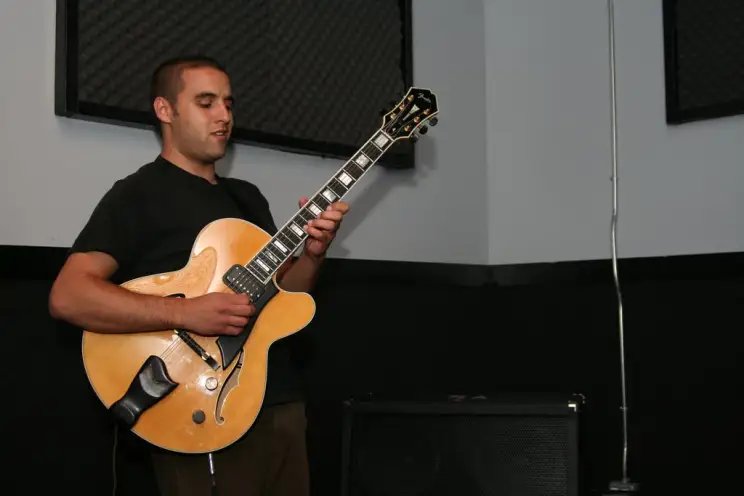Get Better Recordings By Identifying The Hook
May 20, 2013Every great song has a hook. That one element that draws the listener in and keeps them there. Whether a pop song, jazz instrumental, or baroque orchestral piece, at the center of every song is a hook of some kind. And one of the keys to getting a great recording is to identify and build around the song’s hook.

Via Jordan Fischer Flickr
What Is Your Song’s Hook?
I’ll show you what this can look like in the recording phase, but first you have to answer an important question: what IS the hook of your song? Can you clearly identify the hook? Sometimes it’s the vocal melody or an instrumental riff. Other times it is simply a percussive rhythm. Of all the great things going on in your song, what is the ONE thing that really drives it and makes it unique?
The hook is what gets stuck in your head hours after hearing the song. It’s what makes your foot tap in the car. The hook is generally repeated throughout the song as a theme, giving the listener just enough of it to be memorable, not too much of it so as to keep them wanting more. Like a good magician.
Now Build Around The Hook
A few weeks ago I was playing around with my Eleven Rack, looking for cool guitar tones. I stumbled across a preset called “Play Power Chord”, so I did just that. Immediately what came out of the speakers was inspiring. A super cool modulation effect that made simple power chords sound rhythmic and musical. I strung some chords together into a pattern that was catchy and I knew immediately I had something.
I wrote a vocal melody over the chords, worked out a simple chorus (which has it’s own hook in a way), and built an entire arrangement from there. When my drummer came over to track his kit, working out the drum parts was simple. I asked him to follow the hook. The crazy cool guitar patch was I built the song around so I asked the drums to follow it’s rhythm and vibe.
This week I have to record bass guitar and vocals, both of which will follow the drums in being built around the hook guitar riff. In the end this song will have many layers and sections, but they will all serve and have been influenced by the original hook.
Why This Works So Well
This may sound overly simplistic to you, and you would be right. It is so simple in fact that many of us do it without thinking. Building and recording around the hook is what makes a recording work. Every part is unique to itself to be sure, but their primary function to is add on to the original driving core of a song. So everything has cohesion.
Imagine a great jazz ensemble where each musician takes time for a solo. When the bass player starts going after it, the guitarist, pianist, and drummer tone down a bit and play in support of the bass. They don’t STOP playing altogether, as if to feature the bass more. No. In fact, by stopping they would take away from the overall sound of the band. But they only play what supports the bass, and what points the audience to the bass player in that moment.
The same is true when recording a full arrangement. Find the hook for that specific song, and then make sure every other instrument and part that is recorded doesn’t take away from that hook, but rather makes it better and points the listener back to it.
Discover The 6 Steps for Creating a
Radio-Ready Song from Scratch"
Enter Your Email Below To Receive The Free 17-page PDF,
"6 Steps To A Radio-Ready Song"
We hate SPAM. We will never sell your information, for any reason.

